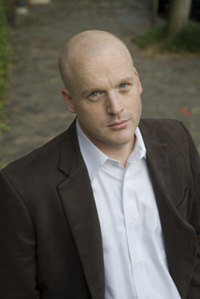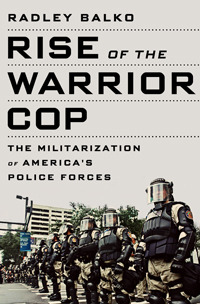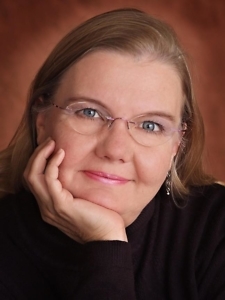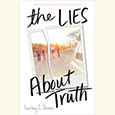Beyond Shock and Awe
Radley Balko rethinks America’s militarized police forces
The history of crime-fighting in America reflects a balance between individual rights and the need for public safety. On the one hand are the precepts of the Castle Doctrine, a fundamental part of English Common Law preserved in U.S. Constitutional language that prohibits illegal searches and seizures and unwarranted raids. On the other is the prevailing sense that crime is on the rise.
 In Rise of the Warrior Cop, Nashville-based journalist Radley Balko maintains that many ultra-violent techniques currently used by America’s police forces are unconstitutional—and ineffective. According to Balko, the line between soldiering and policing has been eroded, and police forces are growing increasingly dependent on military tools and military training, even though most suspects are accused of non-violent crimes. Since 9/11, federal legislation has made it even easier for policing agencies of all stripes to acquire sophisticated weaponry, often without the training that should come with it. “These policies,” Balko says, “have given us an increasingly paranoid, increasingly aggressive police force in America, and a public shielded from knowing the consequences of it all.”
In Rise of the Warrior Cop, Nashville-based journalist Radley Balko maintains that many ultra-violent techniques currently used by America’s police forces are unconstitutional—and ineffective. According to Balko, the line between soldiering and policing has been eroded, and police forces are growing increasingly dependent on military tools and military training, even though most suspects are accused of non-violent crimes. Since 9/11, federal legislation has made it even easier for policing agencies of all stripes to acquire sophisticated weaponry, often without the training that should come with it. “These policies,” Balko says, “have given us an increasingly paranoid, increasingly aggressive police force in America, and a public shielded from knowing the consequences of it all.”
During a recent email exchange with Chapter 16, Balko weighed in on some alternatives to violent policing:
Chapter 16: You’ve stated that increased violence against police officers is a myth used to justify the militarization of law enforcement, when actually the job of policing is safer than ever. In your opinion, why is violence against cops––and violent crime in general––on the decrease?
Radley Balko: If I knew the answer to that question, I’d be writing another book! There are probably more criminologist opinions on what’s responsible for the drop in crime than there are criminologists. I’ve interviewed many of them about this, and the consensus seems to be that a rising standard of living and the petering out of the crack epidemic are probably most responsible. Most think mass incarceration had a small effect (though probably not large enough to justify the costs). Other theories include decreased exposure to lead, an aging population, and legalized abortion.
My own theory? Air conditioning. Violent crime goes up when the weather gets hot. And the crime rate began to drop just as air conditioning became more common in low-income areas. (I should add that I haven’t seen any empirical data to support my opinion. And every criminologist to whom I’ve mentioned it has scoffed.)
Chapter 16: How much responsibility falls on the media when it comes to perpetuating the myth of increasing violence?
Balko: Certainly some. But I think it’s just in our nature to be drawn to bad news and to be less cognizant of slower trends that develop over time. But there’s no mistaking it. The crime rate is at the lowest level we’ve seen since the early 1960s. Yet polling data shows that fifty-five to sixty percent of the country still thinks crime is getting worse. And unfortunately, it’s too often public opinion––not reality––that drives public policy.
Chapter 16: You’ve said that a militarized police force attracts the wrong type of candidate––one more prone to “shock and awe” than to “protect and serve.” What can be done to make police work more attractive to suitable candidates?
Balko: If you look at some of the recruiting videos that police departments send out to high schools and colleges, they’re full of images of cops rappelling out of helicopters, shooting guns, tackling people, and kicking down doors. At the very first step in the process, they’re trying to appeal to people who think those sorts of activities would be a fun way to earn a living. There’s too little emphasis on community service––on keeping the peace.
But that I think is more of a symptom than the cause. Talk to older cops, and many of them will express concerns about where policing is headed––about the new generation of law enforcement. I think we need better leadership, from both elected officials and police officials. But we can also demand policies that make police departments more transparent, more accountable, and that rein in the use of unnecessary force.
 Chapter 16: Despite the troubling picture it presents, there are some real heroes in Rise of the Warrior Cop. Former Seattle police chief Norm Stamper and former Washington, D.C., chief Jerry Wilson, for example, resisted tremendous institutional pressure to militarize their departments yet still made their streets safer. What characteristics do these administrators share that make them particularly sensitive to an over-militarized police force?
Chapter 16: Despite the troubling picture it presents, there are some real heroes in Rise of the Warrior Cop. Former Seattle police chief Norm Stamper and former Washington, D.C., chief Jerry Wilson, for example, resisted tremendous institutional pressure to militarize their departments yet still made their streets safer. What characteristics do these administrators share that make them particularly sensitive to an over-militarized police force?
Balko: That’s an interesting question. I’d say that all of the “good cops” in the book have humility and empathy. The empathy part is important. They can identify with the people in the communities they serve. One of the most important components of the drug war over the years has been to dehumanize drug offenders. It’s a common tactic in war. You have to convince the public that the enemy isn’t really human before you can convince the public to support your efforts to wage war. Dehumanization is really about destroying empathy. So Stamper, Wilson, Joseph McNamara in San Jose—all of these guys, I think, demonstrate a real capacity for empathy.
They’re also all willing to admit when they’ve made mistakes and to admit that they don’t have all the answers. Police chief and sheriff are both political positions, even though only sheriffs are elected. Politicians are notoriously bad at admitting mistakes, at saying, “OK, this policy seemed like a good idea, but I see now it didn’t work.” In policing, that usually means doubling down on bad policies. I think good police leaders are willing to admit when something they tried didn’t work out, to learn from it, and to look for a better policy.
Chapter 16: The word “war” is often used as a defense for the eroding of civil liberties: the war on crime, the war on terror, and the war on drugs. Do you see an issue on the horizon that’s prone to be our next war?
Balko: I can’t envision any new amorphous entities, but I do think we’ll see “terrorist” vastly expanded so that some types of speech and association fall under the way the word is defined. Opinion polls show that the public is growing skeptical of giving the government more power to fight conventional crime and drugs but still supportive of giving the government new powers to fight terrorism. So I think we could see the government start to include things like gang activity, hate speech, and other traditional crimes as “terrorism.” We’ve already seen some of that. You might remember the ONDCP [the White House’s Office of National Drug Control Policy] effort to link terrorism to casual drug use after the September 11 attacks.
Chapter 16: Like the recent situation in Syria, the issue of police militarization has brought the fringe elements of both parties together: Democrats who fear the police are out of control and Republicans who fear the federal government is out of control. Do you see any hope in these odd alliances, which seem to contradict widely held concerns about partisanship?
Balko: I do, actually. In the book, I point out that one reason we’ve gotten to where we are today is that both sides have been reluctant to speak up when this kind of force has been used on their political opponents––or at least on factions they don’t find sympathetic. But I’ve been encouraged by the reaction to my book. It’s been overwhelmingly positive and supportive, all across the political spectrum.
So maybe, just maybe, people are starting to put partisan differences aside and beginning to understand that the same government that today uses this kind of force against your opponents could tomorrow be controlled by those opponents and will then have the capacity to use that same sort of force against people like you. That’s heartening because the source of the problem has been bipartisan. Both parties have contributed. So the solution will need to transcend political ideology, too.





